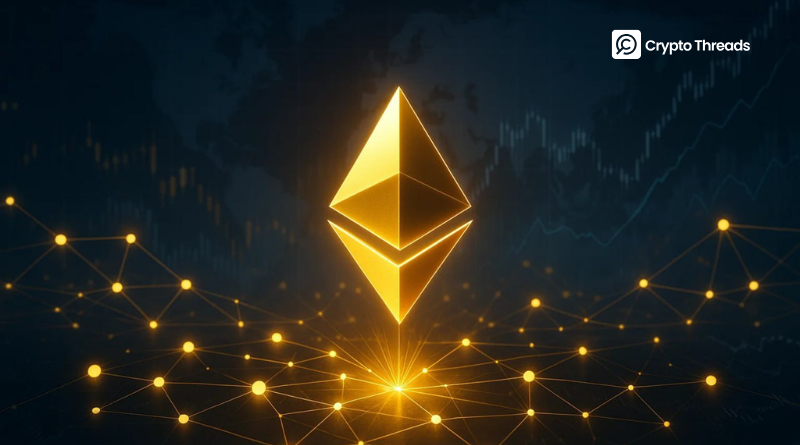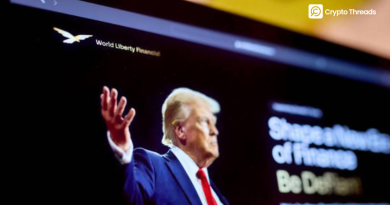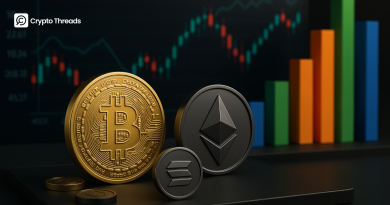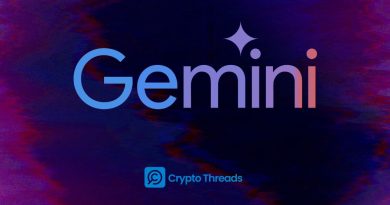What is Ethereum? Beginner’s Guide to ETH, dApps, and Web3
Key Takeaway:
- Ethereum is more than money – it is a programmable blockchain that powers smart contracts and decentralized applications.
- The Merge was a milestone – shifting to Proof of Stake cut energy use and set the stage for scaling.
- ETH fuels the ecosystem – used for gas fees, staking, and as a store of value linked to network activity.
- Community drives growth – developers, users, and investors continually expand Ethereum’s possibilities.
- Backbone of Web3 – Ethereum underpins DeFi, NFTs, DAOs, and the vision of a user-owned internet.
Ethereum is like a global computer where any device in the world can participate. For many, Bitcoin feels straightforward: it’s digital money. Ethereum, on the other hand, seems harder to define. Is it a coin? Is it a blockchain? Or is it some kind of new internet platform? The truth is that it’s all of these things at once.
For beginners, understanding Ethereum means understanding why people talk about Web3, why NFTs matter, and why financial systems are being rebuilt without traditional banks. In this article, we’ll break down Ethereum in simple terms: what it is, how it works, why it matters, and where it’s heading.
What is Ethereum?
Ethereum can be thought of as a decentralized platform built on blockchain technology, but it goes far beyond being just a digital ledger. Unlike Bitcoin, which was created mainly to move value securely, Ethereum was designed from the start to be programmable. In practice, this means the network doesn’t only keep track of transactions, it also allows developers to upload code that executes automatically once specific conditions are met.

At the heart of Ethereum lies the idea of smart contracts. Smart contracts are small programs that live permanently on the blockchain and run exactly as written. Once deployed, they cannot be altered or shut down by a single authority. A smart contract might be as simple as a payment agreement or as complex as a decentralized exchange, a lending protocol, or even the constitution of an online community.
This approach sets Ethereum apart from almost every digital platform we use today. Traditional apps depend on company servers, which can be switched off, censored, or modified at any time. By contrast, applications on Ethereum, known as decentralized apps (dApps), exist across the blockchain and remain accessible as long as the network is alive.
Powering the system is Ether (ETH), the platform’s native currency. Every interaction, whether sending a transaction, triggering a smart contract, or using a dApp, requires ETH to pay “gas” fees. Gas is what keeps the network secure, deters spam, and ensures fair use of its resources. Without ETH, Ethereum would be like a computer with no power source, it simply would not run.
So when people ask, “what exactly is Ethereum?”, the answer is layered. It is a blockchain, a digital currency, a decentralized computer, and an ecosystem of applications all at once. That combination is what makes Ethereum so powerful.
The Origins of Ethereum
Vitalik Buterin is the father of Ethereum. He was a Russian-Canadian programmer who discovered Bitcoin in 2011. At the time, the Bitcoin community was excited about sending money without banks, but Vitalik saw its scripting language as too limited. It could transfer coins securely, but it wasn’t flexible enough to build more advanced applications.

Vitalik started asking: what if a blockchain could run programs, not just transactions? Imagine if developers could write rules directly into code, and those rules would always execute exactly as intended. No lawyers, no bankers, no intermediaries, just code.
In late 2013, he published the Ethereum whitepaper, outlining his vision for a blockchain that worked like a global computer. This new system wouldn’t just process payments. It would allow anyone to create smart contracts and run decentralized applications (dApps).
By 2014, Vitalik had gathered a team of co-founders, including Gavin Wood (who later founded Polkadot), Joseph Lubin (who launched ConsenSys), Charles Hoskinson (who went on to create Cardano), and others. Together, they raised funds through one of the first major crypto initial coin offerings (ICOs), selling Ether tokens to early supporters.

Ethereum officially launched in July 2015. Within just a few years, it became the second-largest cryptocurrency by market value. Unlike Bitcoin, Ethereum was never meant to be just money. It was designed to be a platform for innovation, a place where new financial systems, new art markets, and even new communities could exist without relying on centralized control.
This background helps explain Ethereum’s lasting influence. Rather than trying to rival Bitcoin, it set out to show that blockchain could be more than digital money, an idea that naturally leads to the question of what Ethereum really is today.
Smart Contracts and Decentralized Applications
As we discussed, one of the biggest breakthroughs that Ethereum introduced to the world is the concept of the smart contract. They are pieces of code stored on the blockchain that executes automatically when certain conditions are met. Think of it as a digital agreement that enforces itself. For example, if you wanted to create a small betting contract on the outcome of a football game, you could write those rules into code. Once the game ends and the outcome is known, the contract carries out the transfer of funds without requiring a referee, a lawyer, or even trust between the parties involved.
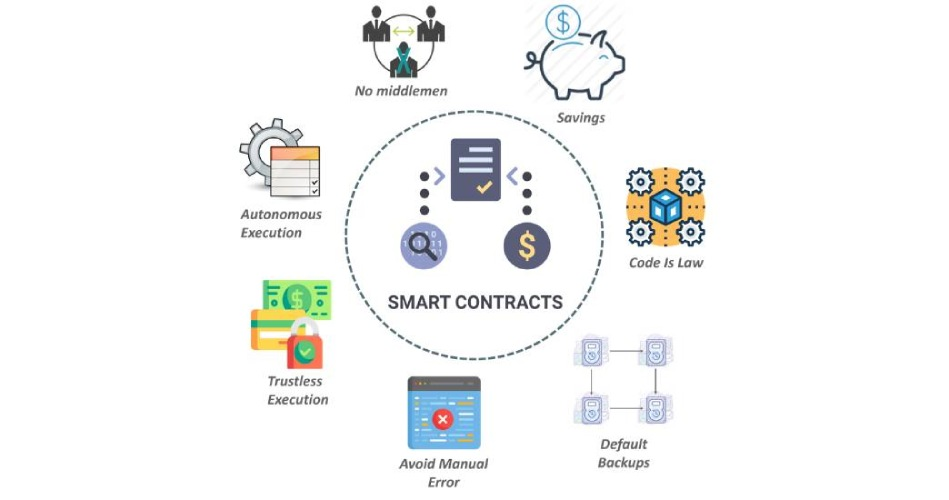
This idea of self-executing code became the foundation for decentralized applications, often called dApps. These applications work in the same way as apps on your phone or computer, but with one crucial difference: instead of running on a company’s private servers, they run on Ethereum’s blockchain. Because of this, no single authority can take them offline, change their rules, or censor the activity of users.
The range of dApps is already wide and continues to grow. In finance, people use Ethereum to lend, borrow, and trade without relying on banks. In art, Ethereum powers the NFT markets where digital works can be owned and traded with verifiable authenticity. In gaming, entire virtual economies run on Ethereum-based tokens. Communities form decentralized organizations where decisions are made collectively, not dictated by one person at the top.
What makes all of this possible is the Ethereum Virtual Machine, or EVM. This is the environment that ensures every smart contract runs in the same way on every computer connected to the network. It is what keeps the system consistent and trustworthy.
With smart contracts and dApps, Ethereum proved that blockchain could be much more than a tool for transferring money. It could be a platform for building entire new economies, and that vision naturally brings us to the role of Ether, the fuel that powers it all.
The Role of Ether (ETH)
Ethereum is the platform; Ether is what keeps it alive. Any action on the network consumes computing resources, and those resources are priced in gas, which is paid with ETH. This simple rule aligns incentives across the system. Users who want their transactions processed pay for the privilege, while validators who supply security and computation are rewarded for doing the work. The fee market discourages spam, prioritizes scarce block space, and gives the network a built-in way to allocate capacity where it is most valued.
ETH is more than a transaction token. It is the asset that anchors Ethereum’s security model. Since the network moved to Proof of Stake, validators must lock ETH as collateral to participate in consensus. Honest behavior earns them rewards; dishonest behavior risks losing part of that stake. Security is no longer a race of hardware, it is an economic game where ETH sits at the center.

Supply dynamics also matter. With the London upgrade in 2021, a base portion of every transaction fee is burned. Part of the ETH paid for gas is permanently removed from circulation, while validators receive separate priority fees and consensus rewards. When activity is high, the burn can offset issuance, and at times the supply has even drifted lower. That feedback loop ties network usage to ETH’s scarcity in a clear, measurable way.
Because ETH fuels computation, backs security, and benefits from a transparent monetary mechanism, it has taken on a second life as an investment. Some hold it for access to the ecosystem; others hold it as a store of value linked to the growth of decentralized applications. In both cases, its utility and its economics reinforce each other.
Understanding Ether’s role sets up the next piece of the puzzle: how Ethereum’s Proof of Stake actually works and why staking changes the network’s security and scalability profile.
Proof of Stake and The Merge
Ethereum began with Proof of Work, the same mechanism that powers Bitcoin. Miners solved complex puzzles using high-performance computers, earning rewards while keeping the network secure. The system was effective but consumed enormous amounts of energy and made scaling difficult. Developers looked for an alternative that could keep Ethereum secure while supporting long-term growth.
On September 15, 2022, Ethereum completed The Merge, a historic upgrade that replaced Proof of Work with Proof of Stake. In this new system, validators take the place of miners. To participate, they deposit ETH as collateral, a process called staking. Honest validators earn rewards for proposing and confirming blocks. Those who attempt to act against the network risk losing part of their stake. Security is enforced through aligned incentives rather than raw computing power.

The impact was immediate. Energy consumption fell by more than 99%, removing one of the main barriers to mainstream acceptance. Staking also made participation more accessible. With enough ETH, individuals could run their own validator. Smaller holders could contribute through staking pools and still share in the rewards.
The Merge also opened the door to Ethereum’s future roadmap. Proof of Stake created a base for scaling solutions such as rollups and sharding, which aim to increase speed and reduce fees. This shift gave Ethereum the flexibility it needs to serve a growing global user base.
The Merge stands as proof of Ethereum’s ability to evolve while protecting the billions of dollars flowing through its network. It was a demonstration of resilience and coordination, and it set the stage for the strengths that continue to make Ethereum the leading platform in the blockchain world.
Ethereum vs. Bitcoin
Bitcoin and Ethereum are often mentioned together, yet they were built with different purposes in mind. Bitcoin was designed as a form of digital money, a secure and scarce asset that people can hold or transfer without banks. Its simplicity is part of its strength. Ethereum, on the other hand, was designed as a platform. It takes the blockchain idea further by allowing developers to build smart contracts and decentralized applications on top of it.
Web3 emerges as the next layer built on top of platforms like Ethereum. It envisions a digital world where users own their assets, identities, and communities directly. In Web3, artists distribute work through NFTs, gamers trade in-game tokens with real value, and DAOs replace traditional organizations with code-driven governance. If Bitcoin anchors value and Ethereum provides the engine, Web3 represents the ecosystem that grows from them, a decentralized internet shaped by its users.
| Aspect | Bitcoin | Ethereum | Web3 |
| Core Identity | Digital money, “digital gold” | Programmable blockchain, global computer | Decentralized internet built on blockchains |
| Launch | 2009 | 2015 | Evolving concept from Ethereum ecosystem |
| Supply | Fixed at 21 million | No hard cap, fee burning reduces supply | Not a currency, based on tokens and assets |
| Consensus | Proof of Work | Proof of Stake | Secured by underlying blockchains |
| Main Use | Store of value, hedge vs inflation | DeFi, NFTs, DAOs, decentralized apps | Ownership, identity, governance, user-driven apps |
The differences also explain why Ethereum’s roadmap is so closely watched. Its success depends not only on being secure and valuable, but on continuing to evolve and scale. That brings us to the upgrades that define Ethereum’s future.
FAQs
What is Ethereum in simple terms?
Ethereum is a blockchain platform where people can build applications that run without banks or central companies. It uses smart contracts—programs that execute automatically when conditions are met.
How is Ethereum different from Bitcoin?
Bitcoin was created as digital money and a store of value. Ethereum goes further by acting as a global computer, supporting smart contracts, DeFi, NFTs, DAOs, and other decentralized apps.
What is Ether (ETH)?
Ether is Ethereum’s native currency. It is used to pay transaction fees (gas), to stake for network security, and as an investment asset tied to Ethereum’s growth.
What was The Merge?
The Merge was Ethereum’s transition from Proof of Work to Proof of Stake in September 2022. This reduced energy consumption by more than 99% and established a more scalable foundation.
Why are gas fees sometimes high?
Gas fees reflect demand. When many people use Ethereum at the same time, fees rise because space in each block is limited. Scaling upgrades and layer-2 solutions are designed to lower costs.
Is Ethereum deflationary?
Since the London upgrade in 2021, part of every transaction fee is burned. At times of high activity, this has made ETH supply decrease, giving it deflationary pressure.
What is Ethereum’s role in Web3?
Ethereum provides the infrastructure for Web3, the decentralized internet. It supports ownership of digital assets, community governance through DAOs, and user control over identity and value.
Conclusion
Ethereum began as an experiment and has become the foundation of a digital economy. By introducing smart contracts and decentralized applications, it transformed blockchain from a payment system into a platform for finance, culture, and community. The Merge confirmed its ability to adapt, making the network more efficient and ready to scale for global use.
Its strength lies not only in the technology but also in the ecosystem of developers, users, and investors that continue to expand its reach. Ethereum today is both infrastructure for Web3 and a cultural force, shaping how value and identity will be defined in the internet’s next chapter.
